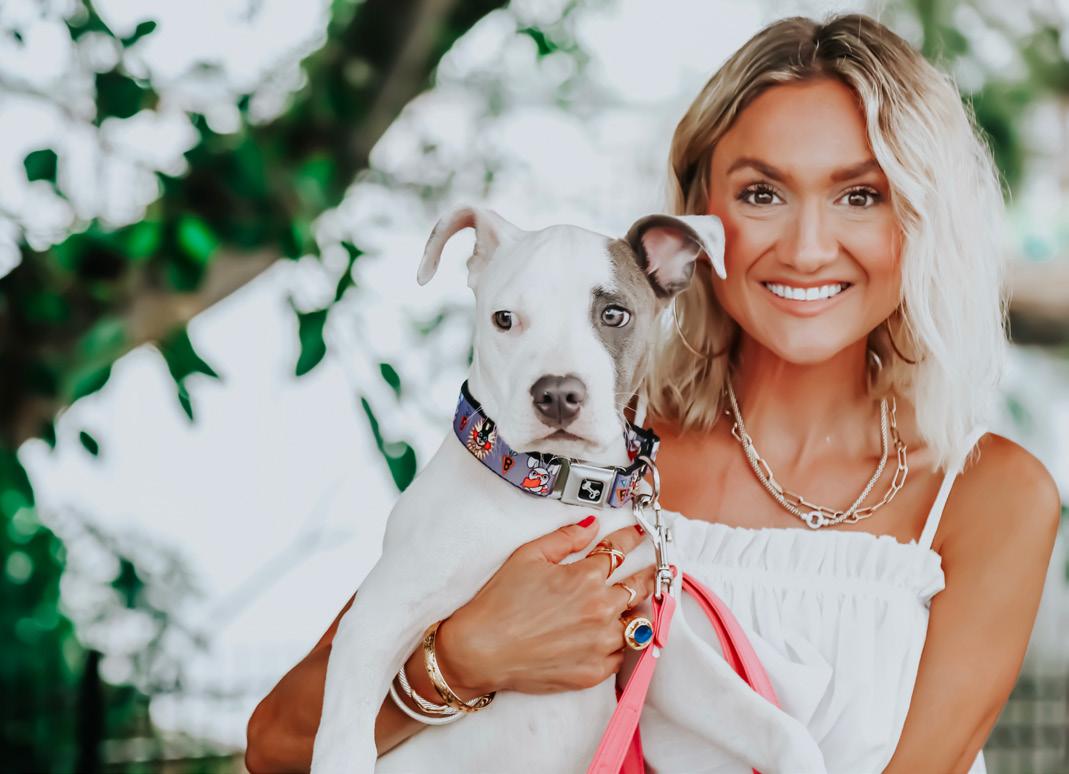
5 minute read
MEMBER SPOTLIGHT A FIGHTING SPIRIT: Dr. Ali Coan and Her Inspiring Pitbull, Bunny
by FVMA
On April 15, 2020, a 13-week-old puppy was rushed into Desoto Animal Clinic. The puppy’s legs stuck straight out, her head was arched back, and her ears were pinned up together on the top of her head. Her mouth was tautly stretched in a sardonic grin— and she couldn’t move at all, even with force. When presented with this statue-stiff puppy, FVMA member Dr. Ali Coan knew exactly what she was dealing with.
“When I first saw Bunny, I had just walked out of a sad euthanasia of a nine-year-old dog,” Dr. Coan said. “The sight of her made me sick to my stomach. She was hard to look at and I knew her prognosis could be poor considering how advanced her clinical signs were. Even though we all do this for a living, I am not completely immune to watching an animal suffer through such harsh states of trauma and pain. Immediately, I thought that this was a case of tetanus so I started to move as quickly as I could based on that tentative diagnosis.”
Advertisement
As the owner of the puppy began to discuss euthanasia options, Dr. Coan came up with another plan to give the pup a fighting chance. She asked that the puppy be turned over to her for constant care, and the owner, thankfully, agreed.
“I wanted to give Bunny a chance even though I had never seen, much less treated a dog with tetanus. When I looked into her eyes, there was that connection and I knew she wanted help and to live,” Dr. Coan said. “I am a childhood cancer survivor and overcoming such a grave prognosis influences the way I view my patients. I want to give them the chance at life that I had. Being a pitbull, I knew that her strong breed would be a strength in her case and, that if any young puppy could pull off a miracle, it would be a pup like her.”
The first two weeks were brutal. Bunny, as the puppy was now called, needed minute-to-minute care; a task taken on by both A healthier Bunny and Dr. Coan weeks after her recovery. Image courtesy of Kim Klement. Dr. Coan and her husband, Matt. They kept Bunny sheltered in a dark, quiet room with a sleep mask over her eyes to help her avoid stimuli, decreasing stress and, therefore, avoiding some of the muscle spasms and dramatic seizure-like activity that occur with tetanus. Bunny received IV fluids, IV antibiotics, IV anti-seizure meds, IV sedatives, IV muscle relaxants and was fed through a syringe since her jaw was locked shut. She also required continual hygiene care to keep her immobile body clean. Dr. Coan also used ice and heat therapy along with range of motion and physical therapy exercises to help recover Bunny’s muscle memory, tone and strength. After about three weeks, there were small signs of improvement—a slightly raised head, a tail wag.
After 21 days of intensive care, Bunny took her first unassisted steps. A huge milestone—and the first of many steps to come. Bunny is now fully recovered and lives the active, energetic lifestyle of a healthy puppy.
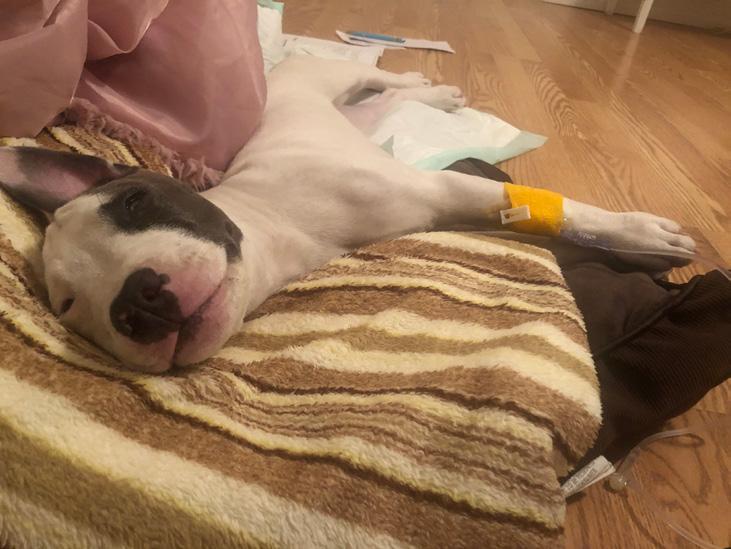
The classical saw-horse body position seen in severe Tetanus cases. Bunny’s body remained in this state for a full 20 days.
Image courtesy of Dr. Ali Coan.

Dr. Coan soothing Bunny after performing late-night nursing care.
Image courtesy of Dr. Ali Coan.
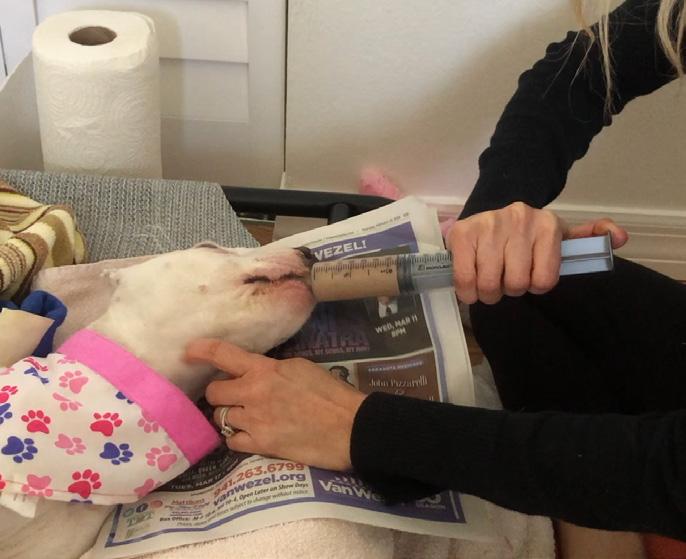
One of many daily syringe feedings. A task that required a lot of patience and attention to help ensure no aspiration occurred.
Image courtesy of Dr. Ali Coan.

Physical therapy for Bunny included massage, muscle compression, range of motion, and strength and muscle memory exercises as seen here.
Image courtesy of Dr. Ali Coan.
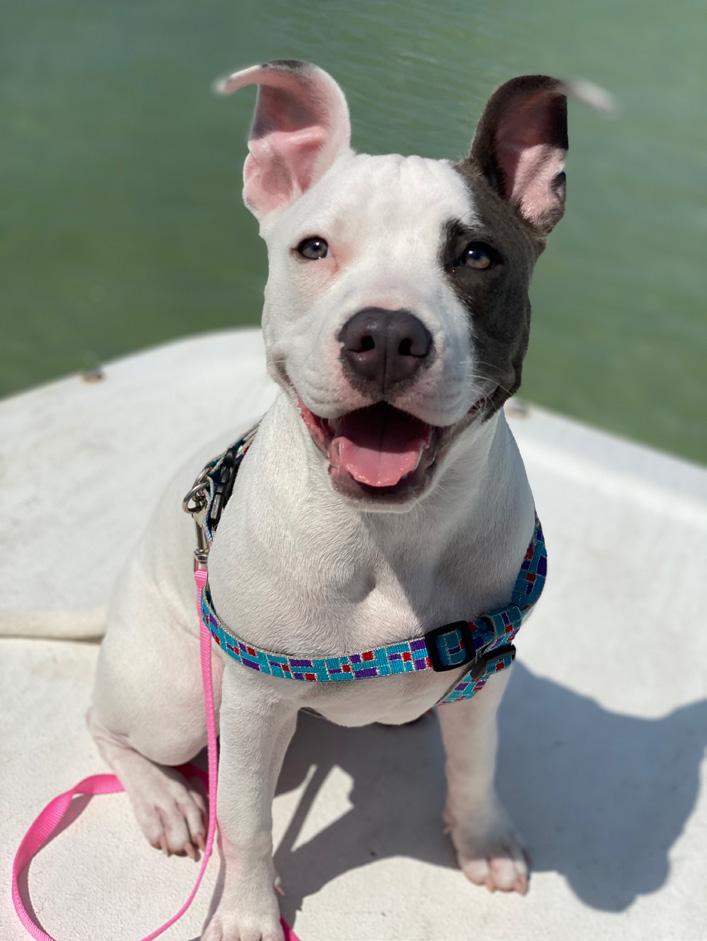
A fully restored Bunny enjoying a boat day on the Gulf of Mexico off of Anna Maria Island.
Image courtesy of Dr. Ali Coan.
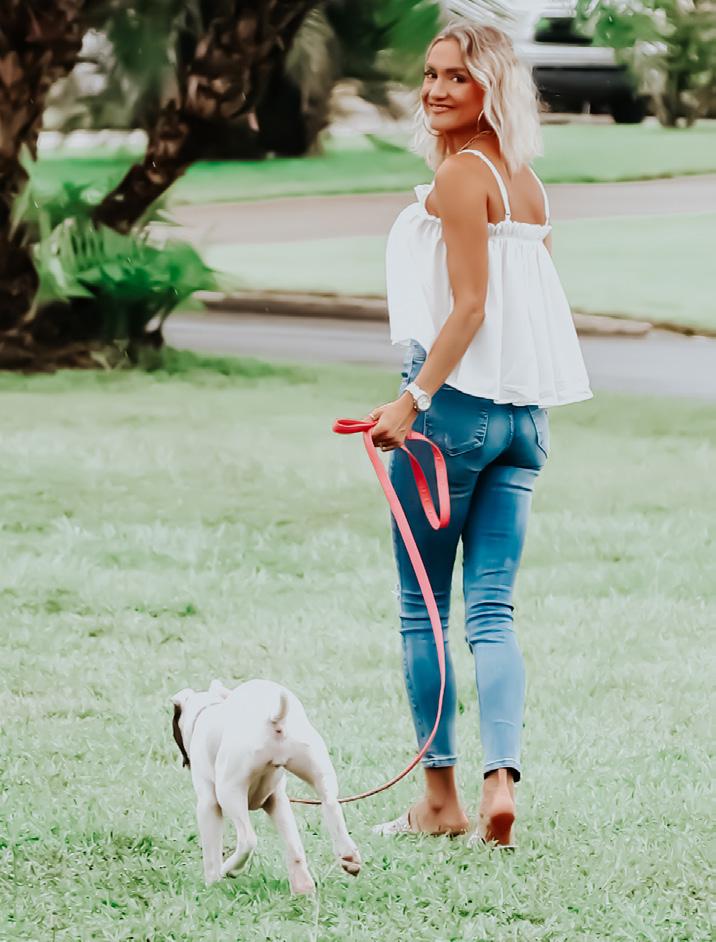
Dr. Coan and Bunny enjoying a stroll in their Florida neighborhood.
Image courtesy of Kim Klement.
“After Bunny survived the first seven days, I knew tetanus wasn’t going to take her,” Dr. Coan said. “I kept hoping, praying and working on preventing any of the other secondary complications from occurring—pneumonia, cardiac failure, herniations. By the end of week two, I knew she was going to survive but we were exhausted and ready to have her up and moving. Sometime during week three, she really began to show great improvements in her strength, and we knew we were getting closer to reaching the goal line of her recovery. On day 21, I got home from work and Matt had Bunny out in the front yard. Just as I got out of my car, Matt put Bunny down onto her four awkward feet and she immediately took off towards me—all on her own! She was so proud, and it was the cutest thing to watch her still-stiff body doing its best to zoom through the grass. That was the first and only time I allowed myself to cry over her. I was completely overjoyed and beaming with pride. In that moment, all of the prior pain and stress went away. It was a special moment—one I’ll always remember.” In all her years as a vet, Bunny’s was the most involved, intensive case that Dr. Coan says she has ever dealt with. Now that Bunny is healthy, the public’s immense support of Bunny’s story serves as a reminder that Dr. Coan did the right thing in choosing to fight for her. “Bunny’s story sums up exactly why I do what I do, and why I give such a large portion of my life to veterinary medicine,” Dr. Coan said. “I know hers is just one of thousands and that many do not have a fairytale ending, but it’s cases like hers that pick me up and give me hope for every sick patient that comes through the door. To give an animal a chance at life that they might not have had, to offer healing through treatment and even to prevent undue suffering through euthanasia when relief is not possible— these are the things that make me proud to be a part of our great profession.”
Dr. Coan grew up in Bradenton, Florida. She received her bachelor’s degree from the University of Florida and graduated from Ross University School of Veterinary Medicine in 2015. She spent her final clinical and surgical year at the University of Florida in 2014-2015. After receiving her degree, she returned home to Bradenton and began working at Desoto Animal Clinic— an exciting opportunity to serve her hometown community.
She and her husband, Matt, enjoy Gator football, spending time with family and friends, and being outdoors, especially on the water. They have three rescue dogs (Cooper, Tibby, Bunny) and a rescue kitty, Leo.

A not-camera shy Bunny posing for a photo at her home.
Image courtesy of Kim Klement.
The classical saw-horse body position seen in severe Tetanus cases. Bunny’s body remained in this state for a full 20 days. Image courtesy of Dr. Ali Coan.




